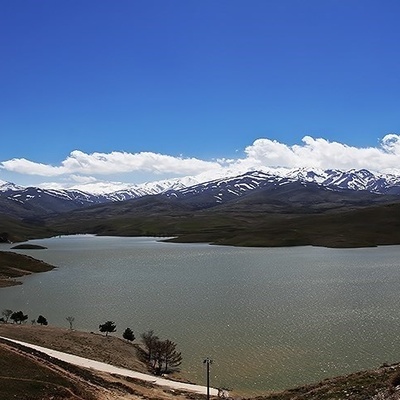Step into Shiraz National Garden and you’ll find a compact, fragrant oasis of pools, sculptures and orange trees that has served the city in many guises for a century.

Living in older cities and the daily life of their people helped shape poets such as Hafez and Saadi — and nature was a major part of that cultural soil. Shiraz was the third Iranian city, after Tabriz and Tehran, to have a municipality, which encouraged green spaces, planting and public gardens. Among those gardens, Shiraz National Garden is a popular, long-standing urban green that has always attracted attention.
Beyond the layers of old Persian empires and literary culture, Shiraz’s gardens and orange blossoms are a vital part of city life. The National Garden is one of the surviving green spaces in the city centre, and because of its central location it has always been an accessible place for leisure.

The garden underwent a major refurbishment in 1315 (Iranian calendar), when large changes were made to its layout. It has been restored at several points during the Qajar, Pahlavi and Islamic Republic periods — planting orange trees, expanding green areas and adding avenues — which shows the long civic care given to the site.
Until 1365, the garden housed a small zoo; that collection was later relocated and the garden received more restoration and green-space investment.

One of the garden’s best features is its proximity to Hafezieh (the tomb of Hafez). The National Garden’s spring fragrance and southern breezes help create a pleasant approach to the poet’s memorial, so the two sites function together in the city’s cultural geography.
From an aesthetic point of view, the garden’s architecture and mature trees are considered a significant urban artwork. Besides old trees and open lawns, designers created a southern gateway using brick arches that give the park a dignified, minimal entrance.
Although cultural heritage agencies sometimes underfund decorative sculpture, the National Garden includes several statues and artworks that add charm to the space.
The garden’s central square contains four heart-shaped pools and a circular flowerbed. Fountains and planted beds create an attractive, family-friendly spot where the sound of water and the breeze among trees produces a calming effect.
A four-sided pillar in the square bears verses by Hafez and Saadi on each face, adding literary resonance to the setting.
On the garden’s northern side a children and youth cultural centre operates — a lively hub used by young people across the city and a place that brings energy to the garden.

Because the National Garden sits centrally amid Shiraz’s attractions, you can easily continue to nearby sites. Hafezieh (the tomb of Hafez) provides a meditative stop; the Seven-Tanan (Bagh-e Haft Tanān) stone museum lies close by and offers a different historical flavour. Luna Park — one of Iran’s larger Ferris parks — is reachable toward Darvazeh-e Quran, and the garden-museum Jahan Nama is another nearby pleasure.




Shiraz’s seasons all give the National Garden a distinct face. Spring is the standout time: orange blossom perfume fills the air, shade is welcome and the garden’s plantings come alive. Summer offers extended shade from the trees and cooler pockets under the canopy. Winter can still be attractive, and the garden remains useful for walks, reading or photography.
The writer recommends visiting in spring to experience the garden when it is most lush and fragrant.

The National Garden sits at the end of Hafez Boulevard in the middle of Azadi (Freedom) Boulevard. It lies near Darvazeh-e Quran and is well placed for visiting other central Shiraz sites.
This historic public park is a place for relaxation, walking, reading and photography. Visitors are encouraged to share their experiences after a visit.
[Image omitted — original included photos of the garden paths, heart-shaped pools, orange trees and the Hafezieh approach.]
Item | Detail |
|---|---|
Location | End of Hafez Boulevard, middle of Azadi (Freedom) Boulevard, central Shiraz |
Key features | Four heart-shaped pools, mature orange trees, fountain beds, sculptures, northern children & youth cultural centre |
Historical notes | Major redesign in 1315 (Iranian calendar); housed a zoo until 1365; restored in multiple eras (Qajar, Pahlavi, post-republic) |
Best season | Spring (orange blossoms), also pleasant in summer and autumn |
Opening hours | Not specified in article |
Nearby attractions | Hafezieh (Tomb of Hafez), Bagh-e Haft Tanān (Seven-Tanan), Luna Park, Jahan Nama garden-museum |
Tip | Quick note |
|---|---|
Best time to visit | Spring — for orange-blossom scent and peak greenery. |
Activities | Great for walking, reading, photography and family picnics near the heart-shaped pools. |
Combine visits | Walk from the garden to nearby Hafezieh (tomb of Hafez) for a poetic stop. |
Facilities & vibe | The garden contains sculptures and a children & youth cultural centre (north side) — expect family activity and a lively atmosphere. |
Historical awareness | The site was renovated repeatedly (major change in 1315) and once operated a zoo (until 1365). |

